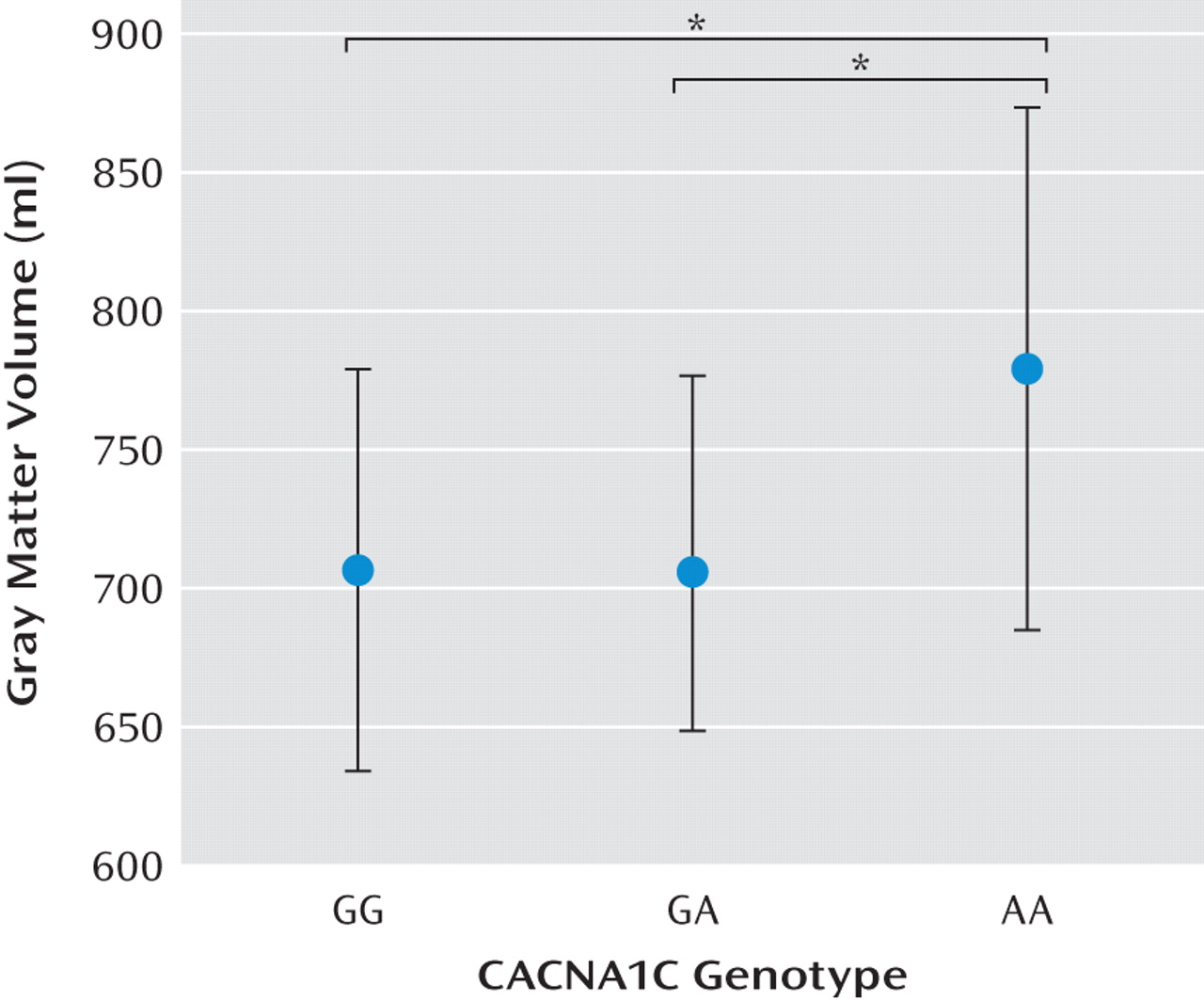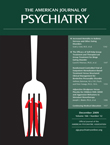To the Editor: Recently, large genome-wide association studies in bipolar disorder have implicated a single nucleotide polymorphism (SNP) in intron 3 of the CACNA1C gene (rs1006737, G to A), which encodes for the voltage-dependent calcium (Ca
2+ ) channel
L -type, alpha 1
c subunit
(1) . Voltage-dependent Ca
2+ channels rapidly increase intracellular Ca
2+ concentration when triggered by depolarization, initiating a host of responses, including neurotransmitter release and changes in gene expression. A known missense mutation (G406R) in CACNA1C causes Timothy syndrome, which is characterized by QT prolongation and autism spectrum disorder
(2) . The A allele is associated with bipolar disorder, but the effect of the rs1006737 polymorphism on brain function and structure is not known. To our knowledge, this is the first report of the potential effect of this polymorphism (or a functional variant in linkage disequilibrium with it) on cerebral volumes in healthy individuals.
Participants were 77 healthy adults of self-reported British, Caucasian ancestry without personal lifetime history of mental health disorders, head injury, or medical disorders (mean age: 34.9 years [SD=13.3]; female subjects: 35). DNA was obtained from buccal swabs using established procedures. The CACNA1C A/G (rs1006737) genotype was determined by a “TaqMan” allelic discrimination assay (Applied Biosystems, Foster City, Calif.). End-point analysis was performed on an ABI7900 DNA analyser, and genotypes were called using the SDS package, with a probability >95%. Structural images were acquired at the Maudsley Hospital, London, using a 1.5 Tesla General Electric Signa magnetic resonance imaging scanner (General Electric, Milwaukee). Images were acquired in the axial plane with a T1-weighted, three-dimensional spoiled-gradient-recalled echo protocol (echo time=5.1 ms, repetition time=18 ms, flip angle=20°, slice thickness=1.5 mm, in-plane resolution=0.9375 mm × 0.9375 mm, number of excitations=1). Total, lobar, and subcortical gray matter
(3) as well as white matter, CSF, and intracranial volumes were determined using voxel-based morphometry employing unified segmentation in Statistical Parametric Mapping-5. The effect of genotype was examined utilizing linear regression of the gene dose effect and analysis of variance (ANOVA) treating the three genotypes (AA, AG, GG) as independent groups.
Allele frequencies did not violate the Hardy-Weinberg principle (p=0.53). Genotype groups were matched for age and gender (both p values >0.33). In the regression and ANOVA models, there was a significant effect of CACNA1C G to A mutation on total gray matter volume (both p values=0.03) but not regional gray matter volume and no effect on total white matter, CSF, or intracranial volumes (all p values >0.13). Total gray matter volume was largest in carriers of the AA allele (N=9,779 ml [SD=94]), followed by heterozygote carriers (N=31, 713 ml [SD=64]), and smallest in carriers of the GG allele (N=37, 707 ml [SD=73]) (
Figure 1 ). The result remained significant after controlling for total intracranial volume and age (p=0.04).
There are two limitations to the present study. The rs1006737 polymorphism may not be a direct functional variant but a tagging SNP within a large block of linkage disequilibrium in intron 3. In addition, potential mechanisms underlying our findings are beyond the resolution of brain imaging. However Ca
2+ voltage-gated channels are involved in neuronal development and connectivity both during early development and in adulthood
(4) .


